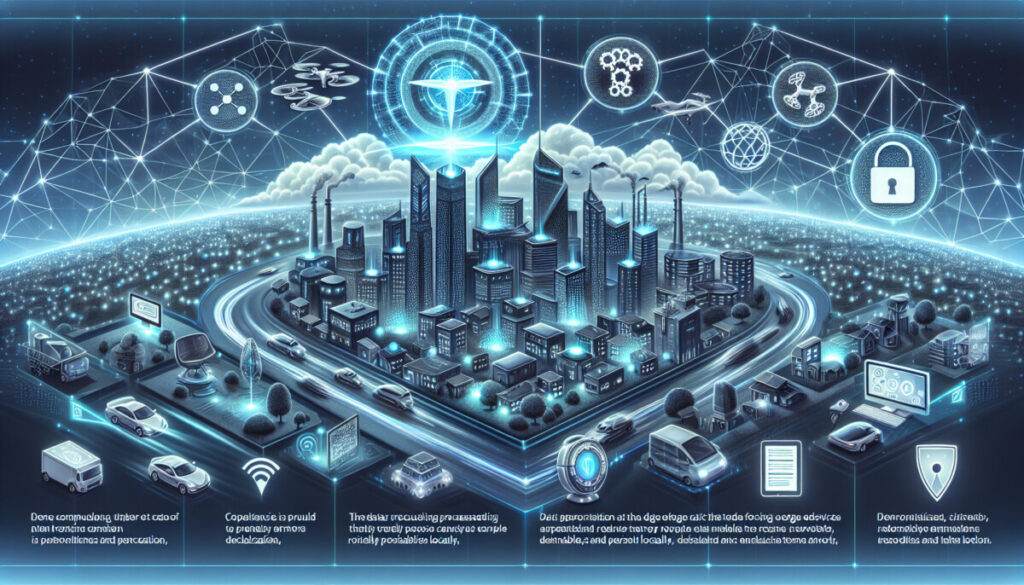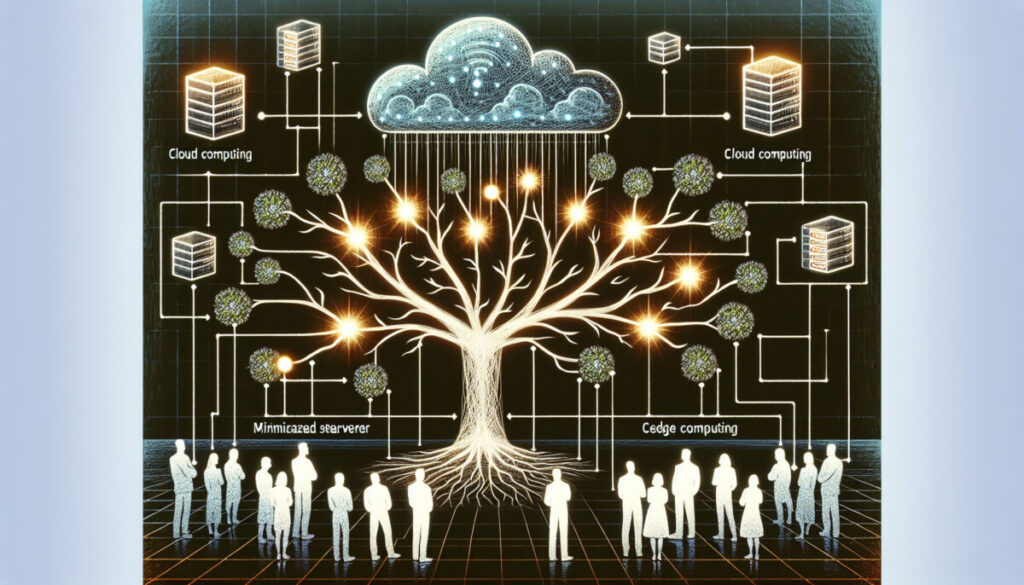Edge computing is revolutionizing the way data is processed and analyzed. By bringing data processing closer to the source, edge computing offers faster processing speeds and reduced latency.
Edge computing is a distributed computing paradigm that processes data physically closer to its source. Instead of sending data to a centralized location, edge computing enables data processing at the edge of the network. This proximity to the data source reduces the time it takes to process information, resulting in faster response times and improved efficiency.
Benefits of Edge Computing
- Real-time insights: By processing data at the edge, organizations can achieve real-time or near real-time insights, enabling faster decision-making.
- Bandwidth limitations: Edge computing helps overcome bandwidth limitations by reducing the amount of data that needs to be transmitted to the cloud or data center.
- Data security: Edge computing enhances data security by keeping sensitive data closer to the source and reducing the risk of data breaches during transmission.
Applications of Edge Computing
Edge computing can be particularly beneficial for applications that require low latency, such as autonomous vehicles, industrial automation, and remote monitoring. By offloading processing tasks to edge devices, organizations can reduce the load on centralized servers and improve overall system performance.
Edge computing offers faster data processing, improved efficiency, enhanced security, and reduced latency. Its applications are vast and diverse, making it a valuable technology for businesses across industries.

Edge Computing: Revolutionizing Data Processing and Analysis
Edge computing is revolutionizing the way data is processed and analyzed, bringing it closer to the source of generation. This technology offers numerous benefits, including faster processing speeds, reduced latency, improved security, and cost savings. By understanding edge computing and its advantages, businesses can leverage this technology to enhance their operations and drive innovation.
Reduced Latency for Faster Response Times
One of the key benefits of edge computing is its ability to significantly reduce latency. Latency refers to the time it takes for a service to respond to a user request. With edge computing, data is processed locally on edge devices, eliminating the need to transfer it to a centralized data center. This proximity between data processing and the source of data generation enables faster response times and real-time analytics. Industries that require immediate insights and quick decision-making, such as autonomous vehicles and industrial automation, can greatly benefit from edge computing.
Enhanced Security
In addition to reducing latency, edge computing offers enhanced security. By keeping sensitive data closer to the source, edge computing reduces the risk of data breaches during transmission. With data processed locally, the need for constant internet connectivity is also reduced, further enhancing security. This is particularly important for industries that deal with sensitive information, such as healthcare and finance.
Cost Savings and Efficiency
Another advantage of edge computing is its cost-effectiveness. By processing data at the edge, organizations can reduce the need for extensive cloud infrastructure and lower data transmission costs. Edge computing also offloads processing tasks to edge devices, reducing the load on centralized servers and improving overall system performance. This cost-saving aspect makes edge computing an attractive option for businesses looking to optimize their operations.
Applications Across Industries
Edge computing can be used in various applications across industries. For example, in the manufacturing industry, edge computing can turbocharge operations by enabling real-time monitoring and analysis of production processes. This allows for immediate action in case of emergencies and improves efficiency and quality control. In the healthcare industry, edge computing facilitates remote patient monitoring and enables faster and more efficient medical care. These are just a few examples of how edge computing can be utilized to improve operations and drive innovation.
Edge computing brings data processing closer to the source, reducing latency, improving security, and offering cost savings. It enables real-time analytics, faster decision-making, and enhanced system performance. Industries that require low latency and immediate insights can benefit the most from edge computing. As technology continues to advance, edge computing is expected to play an increasingly important role in driving innovation and transforming various industries.
Benefits of Edge Computing
Edge computing offers numerous benefits that make it a valuable technology in various industries. One of the main advantages of edge computing is its ability to significantly reduce latency. By bringing data processing closer to the source of data generation, edge computing minimizes the time it takes for data to travel from the edge devices to the cloud or data center. This reduction in latency leads to faster processing speeds and enables real-time or near real-time insights.
Reduced Latency for Faster Processing
The benefit of reduced latency is particularly crucial in applications that require immediate decision-making or quick response times. For example, in autonomous vehicles, edge computing enables real-time analysis of sensor data, allowing the vehicle to make split-second decisions without relying on a centralized system. Similarly, in industrial automation, edge computing facilitates instant monitoring and control of manufacturing processes, ensuring efficient and timely operations. In remote monitoring systems, edge computing enables real-time data analysis, enabling immediate actions to be taken in case of anomalies or emergencies.
Overcoming Bandwidth Limitations
Another advantage of edge computing is its ability to overcome bandwidth limitations. By processing data locally at the edge devices, edge computing reduces the amount of data that needs to be transmitted to the cloud or data center. This reduction in data transmission requirements helps alleviate bandwidth constraints and can result in cost savings. It also reduces the reliance on constant internet connectivity, making edge computing suitable for applications in remote or resource-constrained environments.
Enhanced Data Security
Edge computing also enhances data security. By keeping sensitive data closer to the source, edge computing reduces the risk of data breaches during transmission. This is especially important in industries where data privacy and security are paramount, such as healthcare and finance. Furthermore, edge computing enables distributed computing, allowing organizations to leverage the power of multiple edge devices for parallel processing. This distributed approach improves system resilience and reliability.





